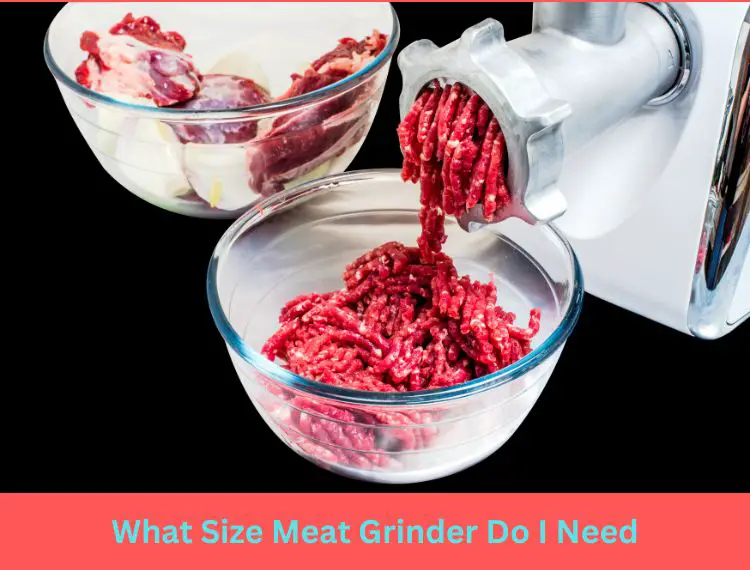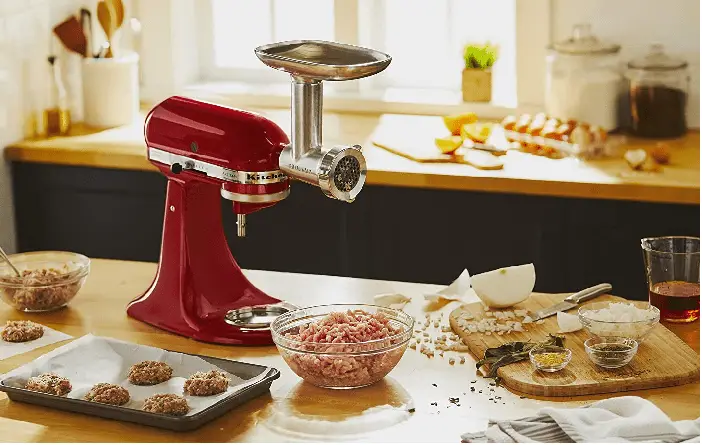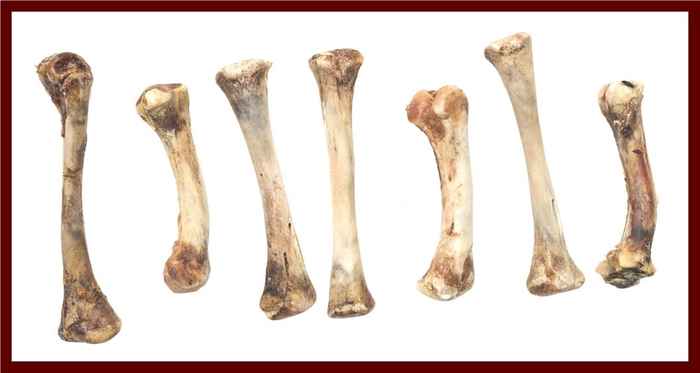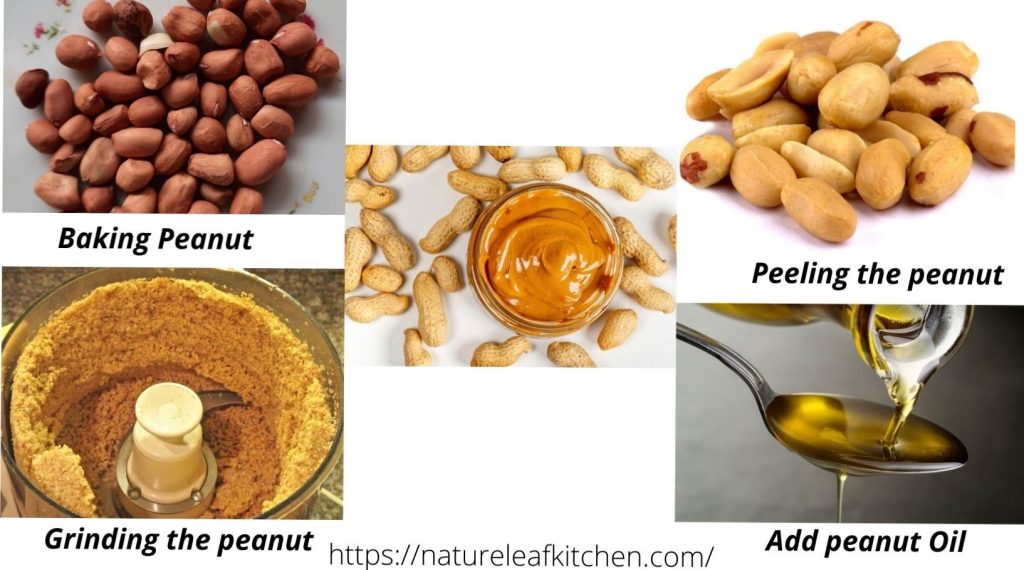A #8 or #12 meat grinder is ideal for home use. For large quantities, a #22 or #32 is better.
Choosing the right meat grinder size depends on your grinding needs and volume. Home cooks often prefer a #8 or #12 grinder for its balance of power and convenience. These models handle small to moderate batches efficiently. If you process larger quantities or grind meat frequently, a #22 or #32 grinder offers more power and speed.
Larger grinders are suitable for hunters or those who make large batches of sausage or ground meat. Consider your kitchen space, budget, and how often you plan to use the grinder. The right size ensures efficient grinding, saving you time and effort.

Choosing The Right Size Meat Grinder
Choosing the right size meat grinder is crucial for achieving the best results in your kitchen. Whether you’re an amateur cook or a seasoned chef, selecting the correct grinder size ensures efficiency and ease of use. Understanding your grinding needs and the available grinder sizes will help you make an informed decision.
Consider Your Grinding Needs
Your grinding needs determine the size of the meat grinder you should choose. Think about how often you plan to use the grinder and the quantity of meat you’ll grind.
- Occasional Use: If you only grind meat occasionally, a small grinder will suffice. These are easy to store and handle small amounts of meat.
- Regular Use: For frequent grinding, a medium-sized grinder is ideal. It handles larger quantities without taking up too much space.
- Heavy-Duty Use: If you process large batches, a large grinder is necessary. It can handle continuous use and grind meat quickly.
Consider the types of meat you plan to grind. Different meats have different textures. A grinder that works well for beef might struggle with tougher meats like venison.
Additionally, think about the end product you want. Fine, medium, or coarse grinds require different grinder sizes and attachments.
Understanding Grinder Sizes
The diameter of the grinder plates usually measures grinder sizes. Here is a quick guide to help you understand:
| Grinder Size | Plate Diameter | Best For |
|---|---|---|
| #5 | 2.125 inches | Small batches, occasional use |
| #8 | 2.5 inches | Regular use, small family |
| #12 | 2.75 inches | Frequent use, medium family |
| #22 | 3.25 inches | Heavy use, large family, small business |
| #32 | 3.875 inches | Commercial use, large batches |
Each size has its benefits. Small grinders are portable and easy to clean. Medium-sized grinders balance capacity and space. Large grinders offer high capacity and speed for heavy-duty tasks.
Choose a grinder that fits your kitchen space and meets your grinding needs efficiently. Consider the motor power as well, as it affects the grinder’s performance. A more powerful motor can grind tougher meats and larger quantities without overheating.

Credit: www.amazon.com
Factors To Consider
Choosing the right size meat grinder can be tricky. Several factors come into play when making this decision. Considering these factors ensures you select a grinder that meets your needs. Let’s explore some of these key factors.
Frequency Of Use
How often you use the meat grinder is a crucial factor. Frequent use means you need a durable and efficient grinder. Consider the following points:
- Daily Use: Opt for a commercial-grade grinder. These are powerful and can handle large quantities of meat.
- Weekly Use: A mid-sized grinder should suffice. These are versatile and can grind different types of meat efficiently.
- Occasional Use: A small, compact grinder works well. These are easy to store and clean.
Here’s a table to help you decide:
| Frequency | Recommended Grinder Size |
|---|---|
| Daily | Commercial-grade |
| Weekly | Mid-sized |
| Occasional | Small |
Types Of Meat To Be Ground
The type of meat also influences your grinder size choice. Different meats have different textures and consistencies.
- Beef: Requires a powerful grinder. Beef is dense and needs a grinder with strong blades and motor.
- Poultry: A mid-sized grinder works well. Poultry is softer and easier to grind.
- Fish: Use a small grinder. Fish is delicate and doesn’t need much power to grind.
Consider these points for different meat types:
- Bone-in Meats: Need a heavy-duty grinder. These can handle bones without jamming.
- Boneless Meats: A standard grinder is enough. These are easier to process and require less power.
Choosing the right size meat grinder ensures efficient and effective meat processing. It saves time and effort in the long run.
Small Vs Large Grinders
Choosing the right size meat grinder can be a game-changer in your kitchen. Whether you’re a home cook or a professional, selecting between small and large grinders can greatly impact your meat processing experience. Below, we dive into the pros and cons of small and large grinders to help you make an informed decision.
Pros And Cons Of Small Grinders
Small grinders are ideal for those who need compact, easy-to-store options. They are perfect for occasional use and small batches of meat. Here are some key advantages and disadvantages:
- Pros:
- Compact Size: Easily fits in small kitchens and cupboards.
- Portability: Lightweight and easy to move around.
- Ease of Use: Simple to operate, even for beginners.
- Affordability: Generally less expensive than larger models.
- Cons:
- Limited Capacity: Not suitable for large batches of meat.
- Power Limitations: May struggle with tougher cuts of meat.
- Durability: Often less durable due to smaller motor size.
- Speed: Slower processing speed compared to larger grinders.
Here’s a quick comparison table for clarity:
| Feature | Small Grinder |
|---|---|
| Size | Compact |
| Portability | High |
| Ease of Use | Simple |
| Capacity | Low |
| Power | Limited |
| Durability | Moderate |
| Speed | Slow |
Pros And Cons Of Large Grinders
Large grinders are perfect for those who need to process large quantities of meat frequently. They are robust and powerful, making them suitable for heavy-duty tasks. Below are the main benefits and drawbacks:
- Pros:
- High Capacity: Can handle large batches of meat effortlessly.
- Powerful Motor: Easily grinds tough cuts of meat.
- Durability: Built to last with heavy-duty materials.
- Speed: Faster processing time, saving you valuable time.
- Cons:
- Size: Takes up more space in your kitchen.
- Weight: Heavier and less portable.
- Complexity: May have a steeper learning curve.
- Cost: Generally more expensive than smaller models.
For a quick overview, check out this table:
| Feature | Large Grinder |
|---|---|
| Size | Large |
| Portability | Low |
| Ease of Use | Complex |
| Capacity | High |
| Power | High |
| Durability | High |
| Speed | Fast |
Features To Look For
Choosing the right meat grinder size is crucial for your cooking needs. Understanding the features to look for will help you make an informed decision. Below, we explore the essential aspects to consider.
Power And Capacity
When selecting a meat grinder, power and capacity are critical factors. These features determine how efficiently and quickly the grinder can process meat. Here’s what to consider:
- Motor Power: Look for grinders with at least 500 watts of power for home use. For heavy-duty grinding, 1000 watts or more is ideal.
- Grinding Capacity: Measured in pounds per minute (lbs/min). Home grinders usually handle 1-2 lbs/min, while commercial grinders can process 3-5 lbs/min.
Consider the following table for a quick comparison:
| Grinder Type | Power (Watts) | Capacity (lbs/min) |
|---|---|---|
| Home Use | 500-800 | 1-2 |
| Heavy-Duty | 1000+ | 3-5 |
Higher power and capacity mean more efficient grinding, saving you time and effort. Make sure to choose according to your specific needs and frequency of use.
Durability And Maintenance
Durability and maintenance are vital for the longevity of your meat grinder. A durable grinder ensures that it can handle frequent use without breaking down. Here are key points to consider:
- Material Quality: Stainless steel grinders are more durable and resistant to rust. Plastic parts may break easily.
- Build Quality: Check for sturdy construction and strong joints. Poor build quality can lead to frequent repairs.
Maintenance is equally important. Easy-to-clean grinders save you time and effort. Features to look for:
- Dishwasher-Safe Parts: Dishwasher-safe Removable parts make cleaning easier.
- Easy Assembly/Disassembly: Simple mechanisms for taking apart and putting together help in quick cleaning.
Here’s a quick look at some maintenance features:
| Feature | Benefit |
|---|---|
| Dishwasher-Safe | Convenient cleaning |
| Easy Assembly | Faster maintenance |
| Stainless Steel | Long-lasting |
Choosing a grinder with these features will ensure it lasts longer and remains easy to maintain.
Choosing The Right Grinder Size For Home Use
Choosing the right size meat grinder for home use can make a huge difference in your kitchen experience. The perfect grinder size ensures you get the job done efficiently, without compromising on quality. Whether you are grinding meat for burgers, sausages, or pet food, selecting the right size will streamline your cooking process. Let’s dive into the details of what size meat grinder you need for home use.
Recommended Sizes For Home Use
For home use, the size of the meat grinder you need depends on the volume and frequency of your grinding activities. Smaller grinders are ideal for occasional use, while larger grinders are better for more frequent and extensive grinding tasks. Here are some recommended sizes:
- Size #5: This is the smallest size, perfect for light-duty tasks. Ideal for small batches of meat.
- Size #8: Suitable for medium-duty tasks. It handles larger quantities than size #5 and is great for small families.
- Size #12: Perfect for regular use. It can grind larger batches efficiently, ideal for medium to large families.
- Size #22: This is a heavy-duty grinder. Best for those who grind large quantities frequently, such as hunters.
Here’s a quick comparison table for easy reference:
| Grinder Size | Ideal For | Capacity |
|---|---|---|
| Size #5 | Light-Duty Tasks | Small Batches |
| Size #8 | Medium-Duty Tasks | Small Families |
| Size #12 | Regular Use | Medium to Large Families |
| Size #22 | Heavy-Duty Tasks | Large Quantities |
Additional Accessories And Attachments
Investing in the right accessories and attachments enhances the functionality of your meat grinder. Sausage stuffing tubes allow you to make homemade sausages effortlessly. Different sizes help you create various sausage types.
- Stuffing Tubes: Essential for sausage making. Available in different sizes for versatility.
- Grinding Plates: Come in various hole sizes. Choose fine, medium, or coarse plates depending on your needs.
- Food Pushers: Ensure safety while feeding meat into the grinder. Prevents your hands from getting too close to the blades.
Here’s what you can expect from these accessories:
| Accessory | Function |
|---|---|
| Stuffing Tubes | Used for making sausages |
| Grinding Plates | Control the texture of ground meat |
| Food Pushers | Enhance safety and ease of use |
Consider these accessories when buying your meat grinder. They make your grinding tasks easier and more versatile. High-quality attachments extend the lifespan of your grinder and improve your overall experience.

Credit: www.walmart.com
Commercial Use Considerations
Choosing the right size meat grinder is crucial for commercial use. The size you need depends on various factors, including volume, output, and specific features. These elements ensure efficient operation and meet your business requirements. Let’s delve deeper into the considerations for commercial use.
Volume And Output Requirements
Understanding volume and output requirements is vital for any commercial kitchen. A high-demand restaurant needs a grinder to handle large quantities of meat daily. Consider the following:
- Daily Meat Volume: Estimate how much meat you grind daily. A grinder handling 5-10 pounds per minute is sufficient for small restaurants. Look for grinders processing 20-30 pounds per minute for larger establishments.
- Output Consistency: Ensure the grinder provides consistent output. Inconsistent grinding can affect recipe quality.
- Operational Hours: Longer operational hours require a more robust grinder. Choose one designed for continuous use without overheating.
Below is a table summarizing the volume and output for different commercial settings:
| Setting | Daily Volume (lbs) | Grinder Capacity (lbs/min) |
|---|---|---|
| Small Deli | 50-100 | 5-10 |
| Medium Restaurant | 100-200 | 10-20 |
| Large Butcher Shop | 200-500 | 20-30 |
Commercial Grade Grinder Features
Commercial-grade grinders come with features that ensure durability and efficiency. Look for the following:
- Motor Power: A powerful motor is essential. Look for grinders with motors ranging from 1.5 to 3 horsepower.
- Material: Stainless steel construction ensures longevity and ease of cleaning.
- Safety Features: Safety mechanisms like automatic shut-off and non-slip feet prevent accidents.
- Ease of Use: User-friendly controls and easy assembly/disassembly save time.
Here’s a breakdown of essential features for commercial grinders:
| Feature | Importance |
|---|---|
| Motor Power | High |
| Material | High |
| Safety Features | Medium |
| Ease of Use | Medium |
Investing in the right grinder ensures smooth operations and high-quality output. Consider these features carefully to match your business needs.
Maintenance And Care
Choosing the right size meat grinder is crucial for your kitchen needs. Equally important is understanding the maintenance and care required to keep your grinder in top condition. Regular upkeep ensures the grinder’s longevity and performance, making your investment worthwhile.
Cleaning And Sanitizing
Cleaning and sanitizing your meat grinder is vital to prevent contamination and ensure food safety. Follow these steps to keep your grinder spotless:
- Disassemble the grinder completely.
- Wash each part with warm, soapy water. Use a brush to remove meat residue.
- Rinse thoroughly with clean water.
- Sanitize by soaking the parts in a solution of one tablespoon of bleach per gallon of water for 10 minutes.
- Dry each part completely to avoid rust.
For easier cleaning, some grinders are dishwasher-safe. Check your grinder’s manual to confirm.
| Task | Frequency |
|---|---|
| Disassemble and wash | After each use |
| Sanitize | After each use |
| Dry parts | After each use |
Storage And Longevity
Proper storage extends the life of your meat grinder and keeps it ready for use. Here’s how to store it effectively:
- Clean and dry all parts before storing.
- Apply a thin layer of food-grade oil on metal parts to prevent rust.
- Store parts in a dry, cool place, preferably in a sealed container.
- Keep small parts together to avoid losing them.
Regular maintenance ensures the grinder performs well for years:
- Sharpen or replace blades when they become dull.
- Check for wear and tear on parts and replace them as needed.
- Follow the manufacturer’s guidelines for any specific maintenance tasks.
Following these steps ensures your meat grinder remains in optimal condition, providing consistent performance and extending its lifespan.

Credit: www.amazon.com
Conclusion And Final Tips
Choosing the right size meat grinder can be challenging. It’s important to consider several factors to ensure you make the best choice for your needs. Here are some final tips to help you make an informed decision.
Making The Right Choice
Picking the right meat grinder size is key to efficient grinding. Consider these factors:
- Volume of Meat: Determine how much meat you plan to grind. For small amounts, a grinder with a smaller size will be sufficient. For large quantities, opt for a larger grinder.
- Power: Look for grinders with higher wattage for better performance. More powerful grinders handle tougher meats and larger volumes efficiently.
- Usage Frequency: If you grind meat regularly, invest in a durable, high-quality grinder. Occasional users can opt for a less expensive, smaller unit.
- Attachments and Accessories: Some grinders come with multiple attachments. These can enhance functionality, making the grinder more versatile.
| Grinder Size | Suitable For |
|---|---|
| Size #5 | Small batches, occasional use |
| Size #8 | Medium batches, regular use |
| Size #12 | Large batches, frequent use |
Remember, a larger grinder can handle more meat and work faster. Smaller grinders are more affordable and easier to store. Pick a size that fits your kitchen space and meets your needs.
Tips For Efficient Grinding
Grinding meat efficiently saves time and ensures quality. Follow these tips for the best results:
- Chill Your Meat: Cold meat grinds more easily. Place your meat in the freezer for about 30 minutes before grinding.
- Use Sharp Blades: Keep your grinder’s blades sharp. Dull blades can tear meat, resulting in a poor texture.
- Cut Meat into Small Pieces: Smaller chunks are easier to grind. Cut your meat into 1-2 inch cubes before grinding.
- Clean Your Grinder Thoroughly: After each use, disassemble and clean your grinder. Proper cleaning prevents contamination and maintains the grinder’s efficiency.
- Grind in Batches: Avoid overloading your grinder. Grind the meat in small batches to prevent clogging and overheating.
Use these tips to improve your grinding experience. Efficient grinding not only saves time but also ensures your meat is processed perfectly every time.
Frequently Asked Questions
How Do You Size A Meat Grinder?
Measure the grinder plate’s diameter to the size of a meat grinder. Common sizes range from 2. 5 to 4. 5 inches. Check the model number.
What’s The Difference Between #8 And #12 Meat Grinder?
The #8 meat grinder has a smaller size and capacity than the #12. The #12 handles more meat and grinds faster.
What Size Grinder To Use For Ground Beef?
Use a grinder with a 3/8-inch or 1/4-inch plate for ground beef. These sizes provide the best texture.
Conclusion
Choosing the right meat grinder size is crucial for your needs. Consider your grinding volume and kitchen space. A small grinder suits occasional use. Larger grinders are best for frequent, heavy-duty tasks. Make an informed decision to enjoy efficient meat grinding.
Happy cooking!



